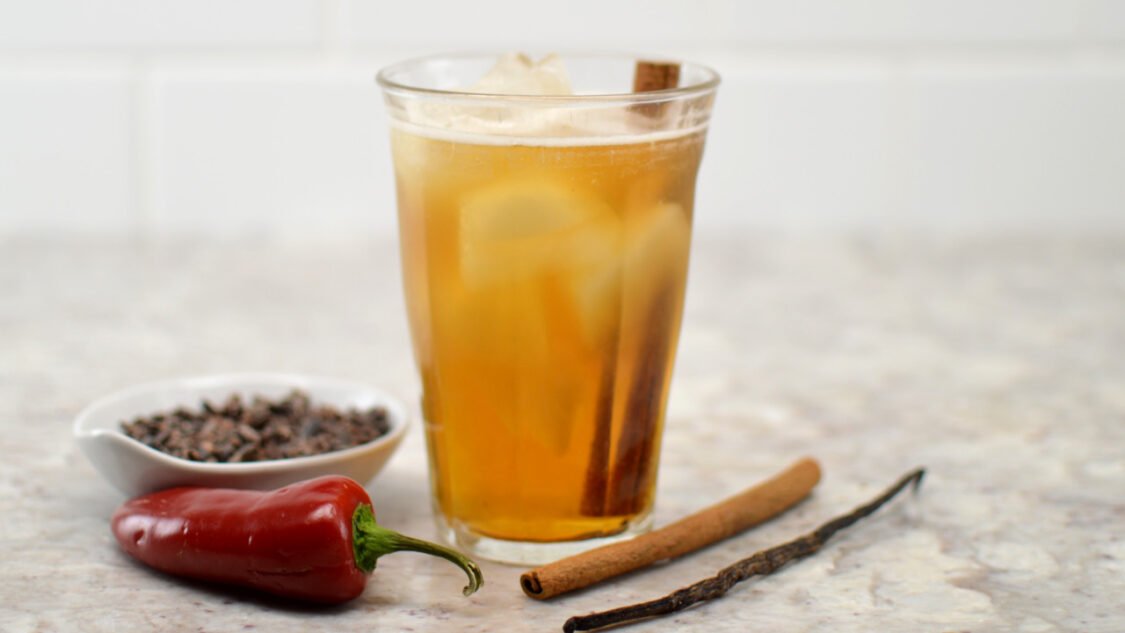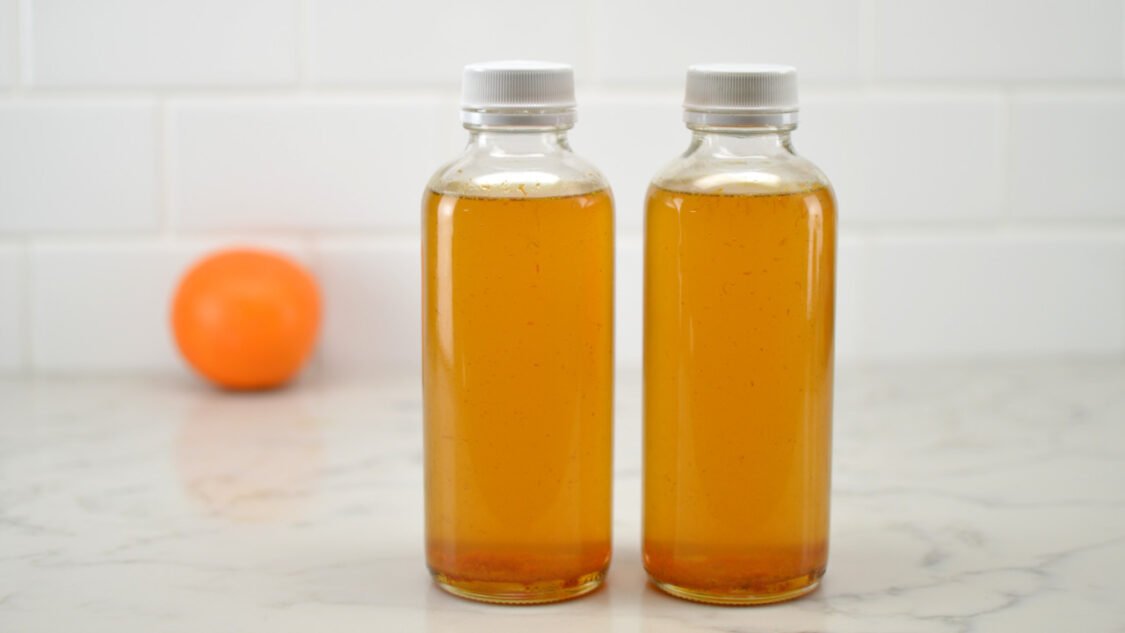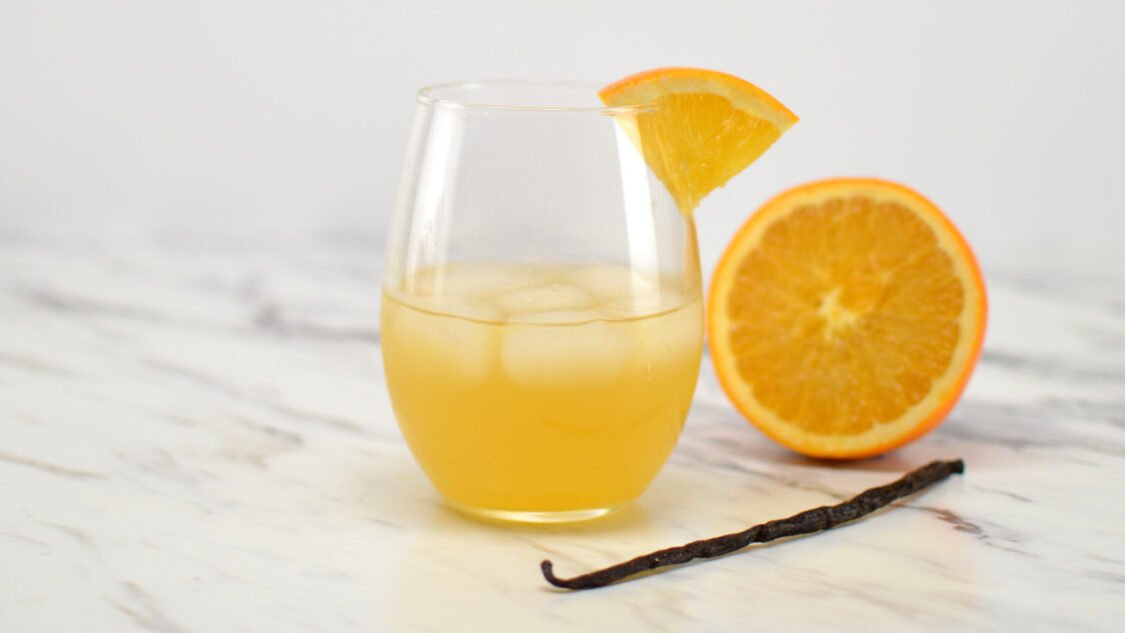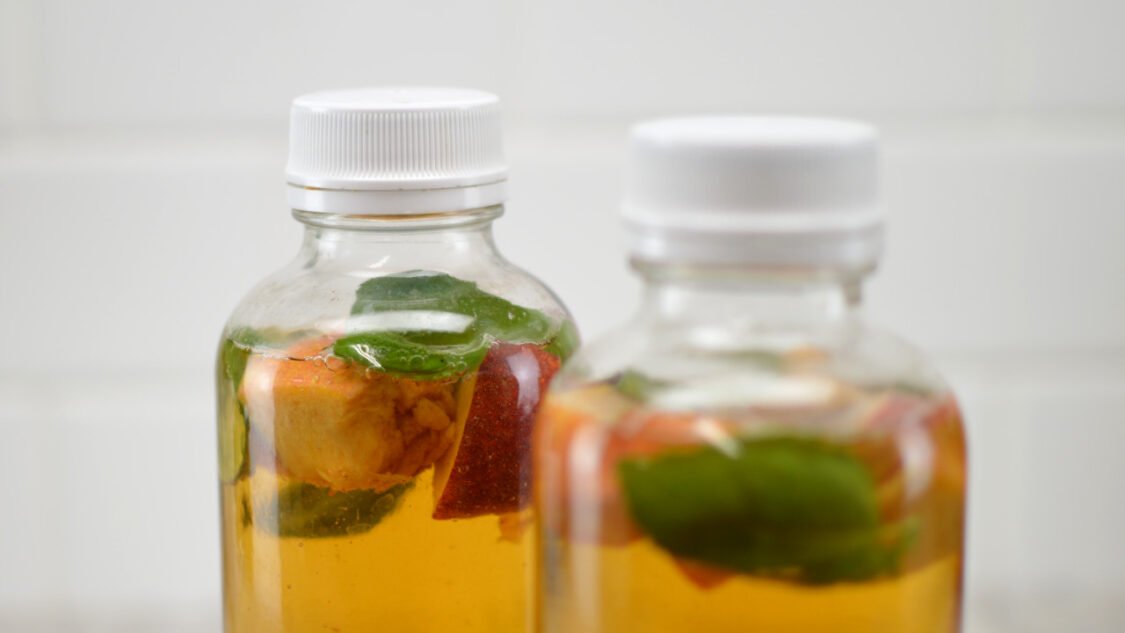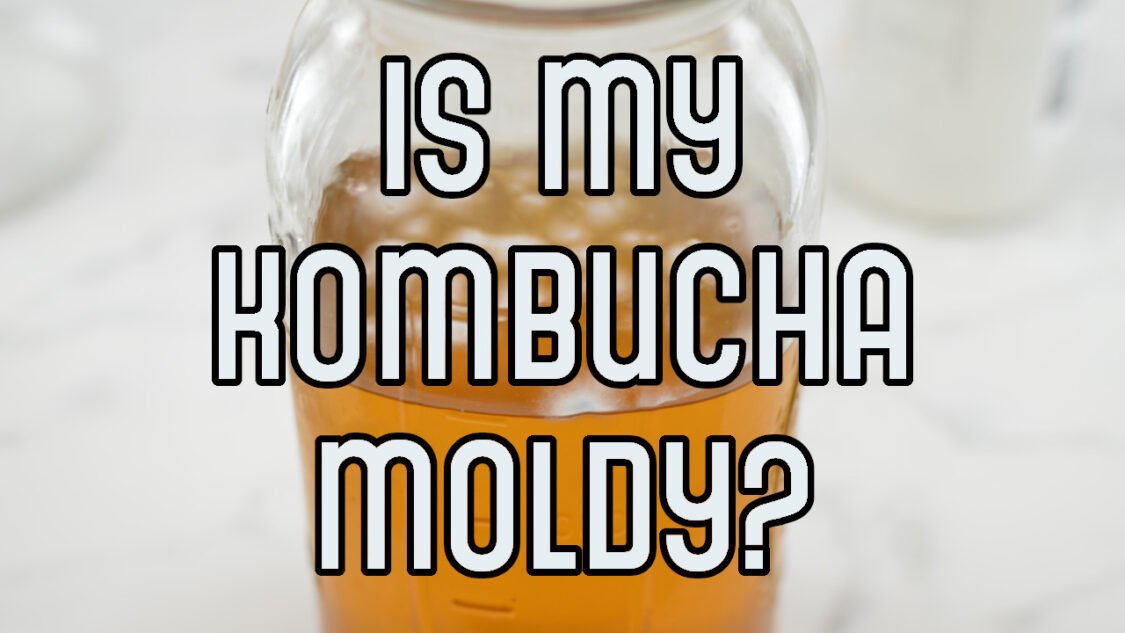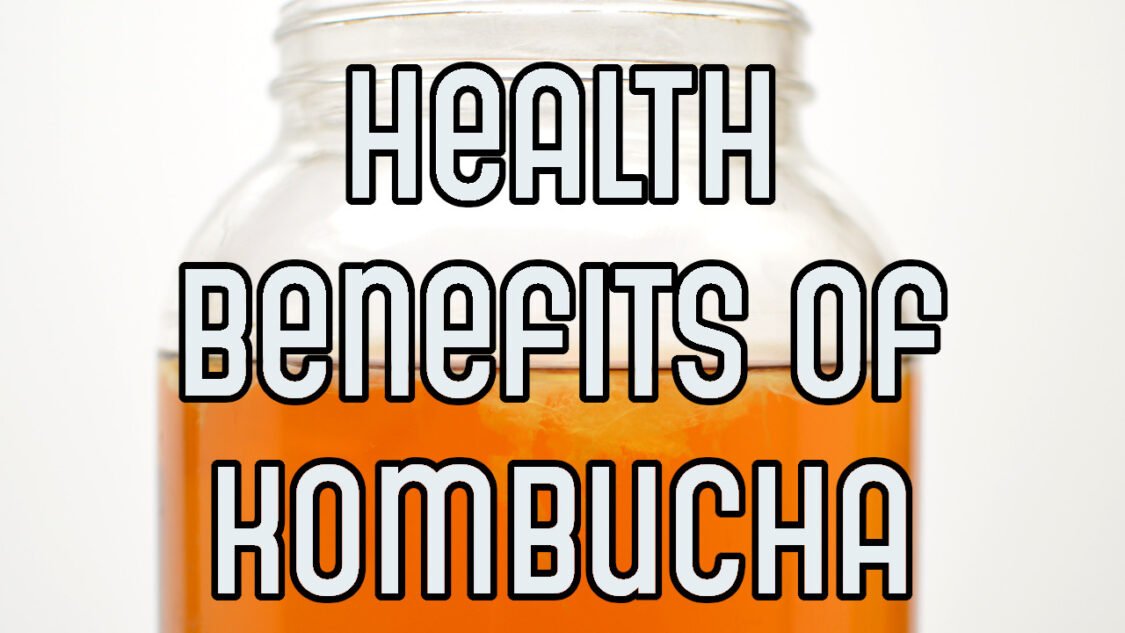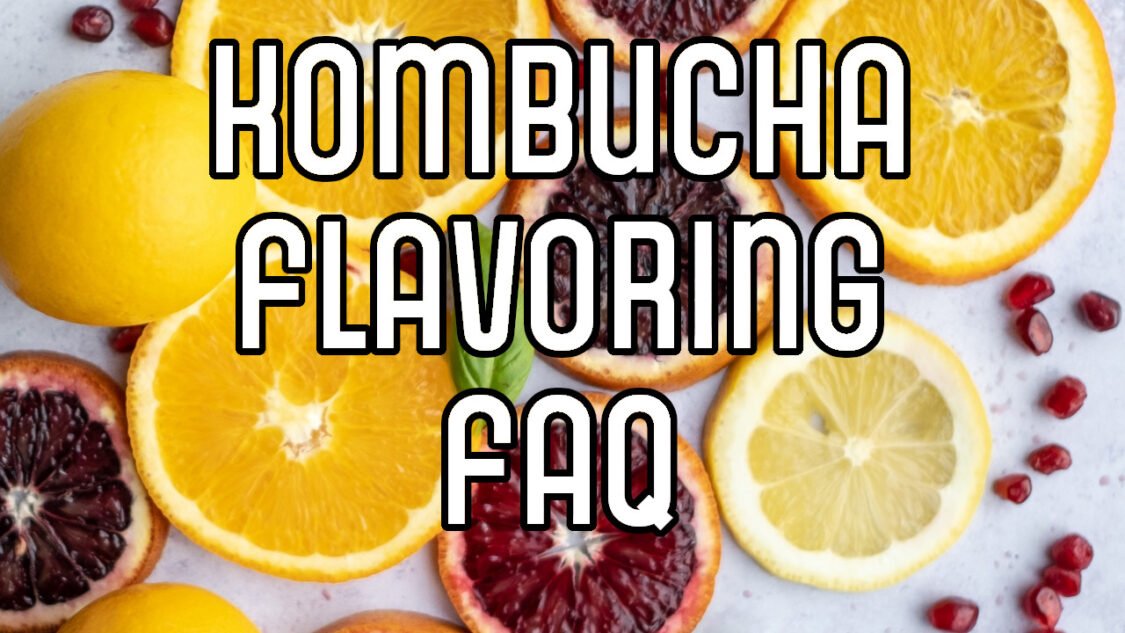Grapefruit Hopadelic Kombucha

If you’re a kombucha lover that also loves beer (like me), Grapefruit Hopadelic kombucha is sure to become a favorite. With a blend of fresh grapefruit rind, fresh grapefruit juice and hop pellets (I used citra, but any will work), Grapefruit Hopadelic kombucha delivers the crisp, hoppy flavor profile that beer lovers crave with almost no alcohol!
It pours hazy and golden-orange with effervescent bubbles that dance on the surface and create a slight head. Aromas of juicy grapefruit and hops are intertwined with the complex earthiness of the kombucha. The taste is a balance of tart grapefruit, sweet fruit notes and subtle bitterness from the grapefruit rind and hops.
Enjoy it from the bottle or use to make a tasty and refreshing Ginger IPA Kombucha Mocktail.
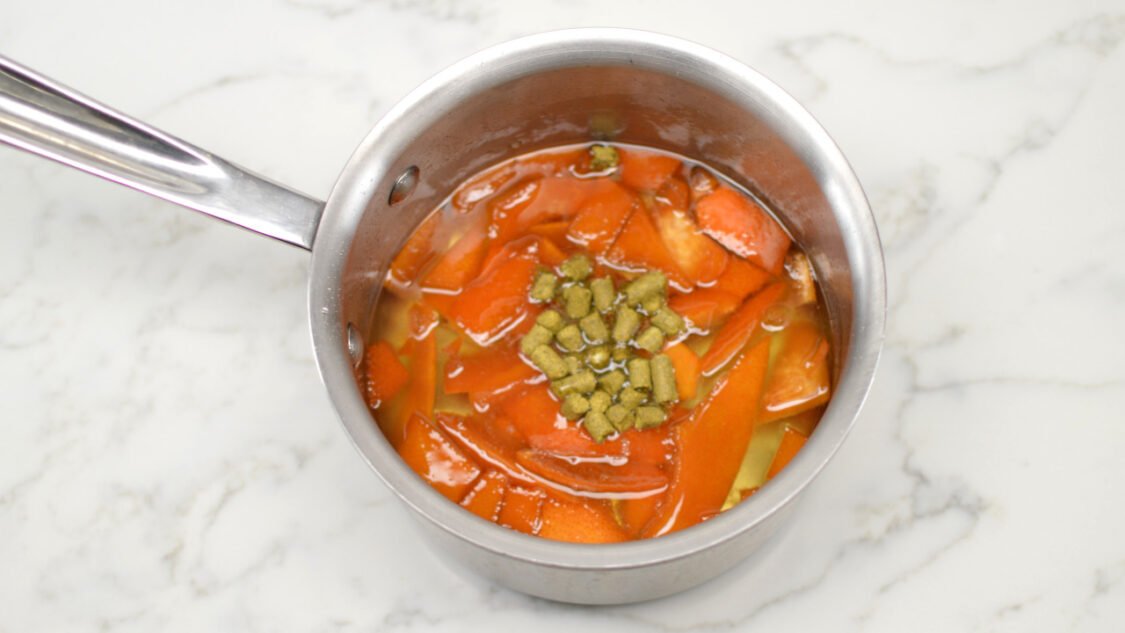
Kombucha Fermentation Overview
There are two fermentation phases when making kombucha:
Primary Fermentation: This is when you transform sweet tea into tart and tasty kombucha. Get all the details at my article on how to make kombucha.
Secondary Fermentation: This is when you carbonate your homemade kombucha by adding flavors (like grapefruit and hops) along with sugars and bottling it.
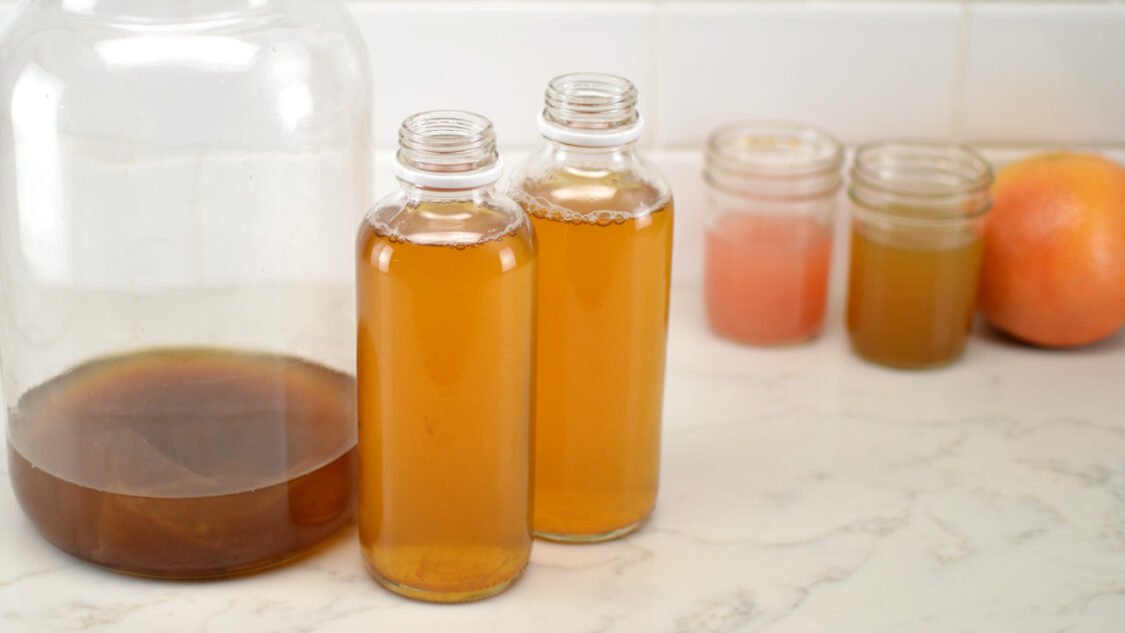
Preparing for Secondary Fermentation
This recipe makes about 7 x 16 fluid ounce bottles of finished kombucha (from a 1-gallon batch of unflavored homemade kombucha aka from your primary fermentation).
Reserve 2 cups (about 16 oz / 0.47L) kombucha and your SCOBY from your completed primary fermentation and set aside – you will use this as your starter for your next gallon batch of kombucha.
With your kombucha starter tea and SCOBY placed aside, you now have enough kombucha left to flavor and fill your bottles. This guide assumes are using 16 oz. glass bottles which are a popular choice for kombucha; however, there are many options for bottling kombucha.
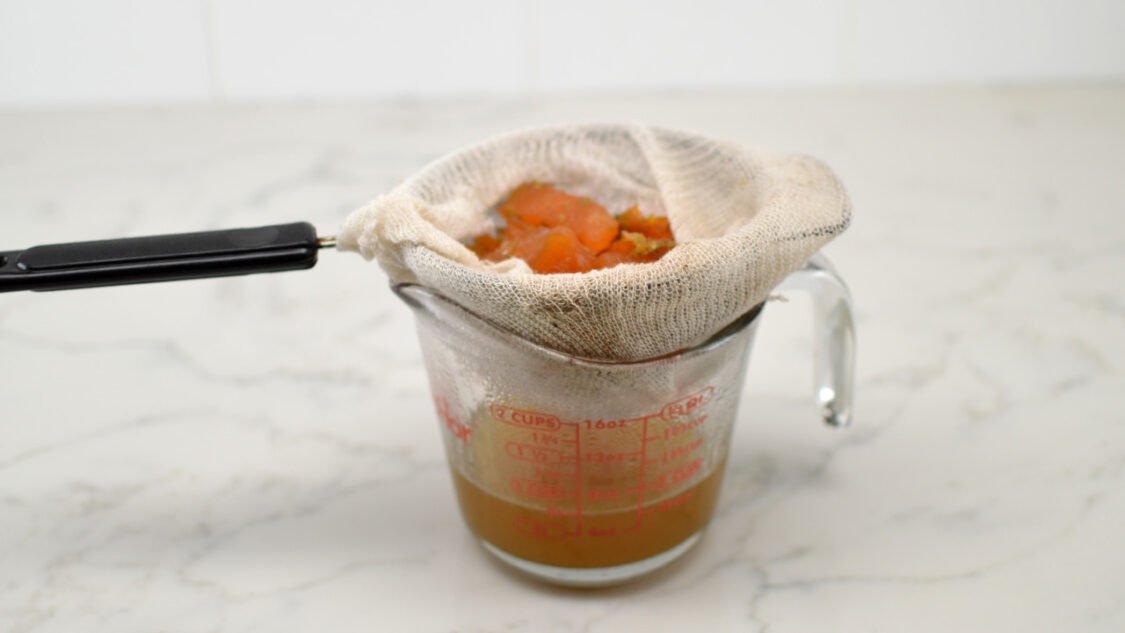
Ingredients to make Grapefruit Hopadelic Kombucha
Kombucha Finished kombucha from your first fermentation is the base to which you will add the grapefruit and hop flavors
Grapefruit: Grapefruit are a popular citrus fruit with a thick rind and an assertive sweet, tart, and bitter flavor profile that is perfect for pairing with kombucha and hops to simulate the bitterness of beer. Like beer they also have a slightly bitter aftertaste.
Hops: Hops are primarily grown for their use in the brewing of beer. They most commonly used in the form of dried, cone-shaped flowers, which contain essential oils and resins that give beer its characteristic bitter flavor and aroma. Both hop pellets and whole cone hops will work for this recipe.
Sugar: White table sugar is used to make a syrup which will infuse the kombucha with flavor and provide a food source for the kombucha cultures to generate carbonation.
How to make Grapefruit Hopadelic Kombucha
Make flavor syrup: Combine grapefruit rind, hops, sugar and water to a small saucepan and make a hoppy grapefruit syrup.
Add Flavors: Add flavor syrup to each bottle.
Bottle: Transfer kombucha to fermentation bottles.
Condition: For 3 to 10 days, until it reaches the carbonation level you like.
Enjoy: Chill in the fridge before serving.
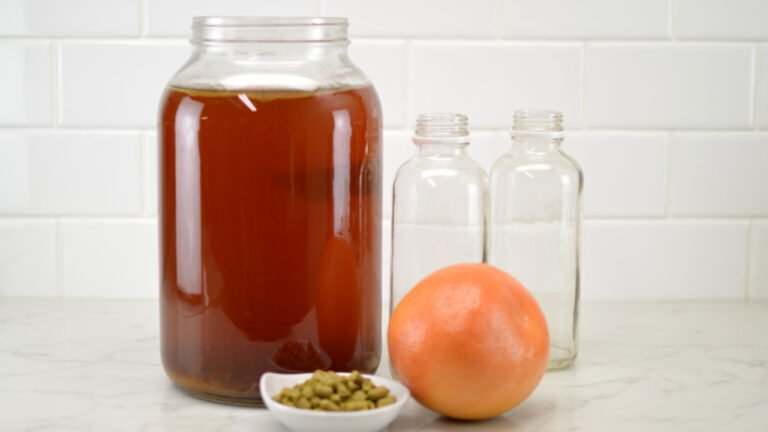
Grapefruit Hopadelic Kombucha Recipe
Yield: 7 bottles • Active time: 20 minutes • Total time: 3 -10 days

This recipe assumes you are doing a secondary fermentation (flavoring and carbonation) in the bottle. You may also incorporate a third fermentation using the same proportions but following the third fermentation steps.
Ingredients:
1 gallon homemade kombucha from a first fermentation, 3.7 L
1 fresh grapefruit, red preferred; Pink or white also work
1 cup water
1 cup white table sugar
1/4 oz hop leaves or pellets. For pellets this is about 1 tablespoon
Instructions:
Prepare flavor syrup: Peel grapefruit and coarsely chop peel and pits. Combine with sugar and water in a small saucepan. Heat on medium until the mixture begins to simmer and simmer for 15 minutes. Add hops and simmer for 5 minutes. When cool, strain into a heat resistant glass measuring cup–I used a strainer and cheesecloth to remove most of the solid material. You should have about 1/2 cup of flavored syrup which will be dark green.
Flavor: Evenly divide hoppy grapefruit syrup between bottles. About 2 Tbsp tsp per bottle.
Sweeten: Since the syrup contains the sugar, there is no need to add more sugar!
Fill bottles: Transfer kombucha into fermentation bottles, leaving about 1 inch empty space at the top.
Cap: Cap the filled bottles and tighten the cap snugly.
Ferment: Place in a dark, room temperature area for 3 to 10 days, until it reaches the carbonation level you like. This process will go faster in warmer climates, and slower in cooler climates.
Enjoy: Chill your grapefruit hopadelic kombucha in the fridge before serving. Since this recipe uses a flavoring syrup there is typically no reason to strain it unless baby SCOBYs form in the bottles.
Homemade Kombucha can be stored in the fridge, tightly sealed, for several weeks.
Tips & Tricks:
Make sweet tea for your next batch the night before you flavor and bottling and let it cool on the stove overnight so that you can flavor your kombucha and get your next batch started at the same time.
If this is your first time brewing, it may be helpful to use a plastic water bottle as a gauge. Fill a recyclable plastic bottle with kombucha (leaving 1.5 inches empty at the top). When this bottle becomes rock hard, you’ll know the glass bottles are also ready. This will help you gauge how long it take for kombucha to carbonate your climate and will prevent bottle explosions.
Nutrition Information:
Kombucha Recipes You Might Also Like
More Kombucha Knowledge
Helping you learn to brew kombucha, find inspiration for new kombucha flavors and use kombucha to make kombucha mocktails

